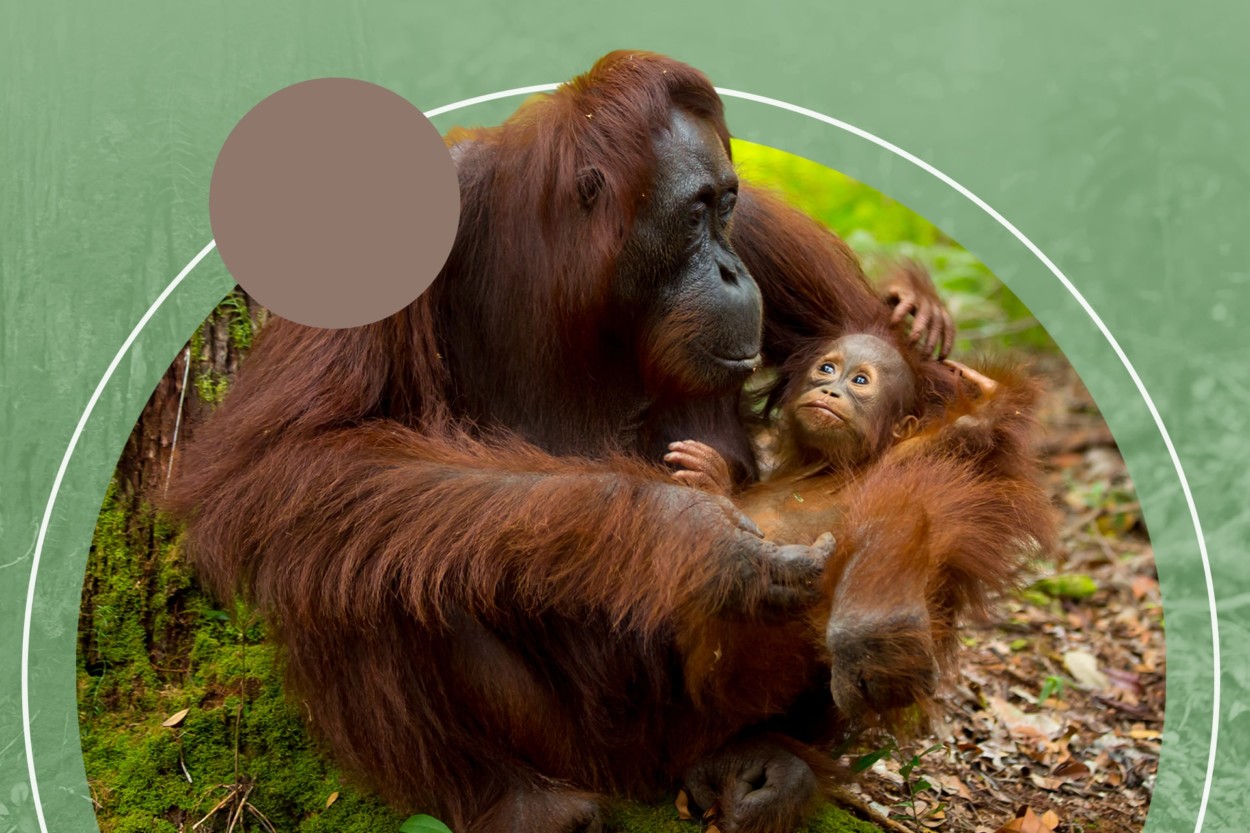
The Effects of Endangered Species in 2024
We are reader-supported. When you buy through links on our site, we may earn affiliate commission.
Endangered species live all around you. You likely have endangered plants or animals right in your backyard. All around you, you see images of those larger endangered animals, like tigers, rhinos and elephants, but do you see the greater effects of endangered species on the planet?
Perhaps you feel bad for them, but that is the extent of how much you think about the effects of endangered species. However, if they disappear, your life may change drastically. As more and more species are put on the endangered list, their risk of extinction rises, and the whole world can change.
There are around 150,388 worldwide species on the IUCN Red List, with an estimated 42,108 species at risk of extinction. The consequences of human actions that have primarily led species to the point of near extinction affect you in more ways than you know.
How Endangered Species Become Endangered
What is an endangered species, anyway? An endangered species is considered any animal or plant in danger of disappearing entirely from this planet. There are varying endangerment levels, but if an animal or plant is on the endangered list, there should be efforts to protect them.
Various circumstances can cause a species to be endangered, such as:
- Habitat Loss: This is one of the primary causes of endangerment. Whether humans clear out a forest or a natural disaster strikes, habitat loss significantly impacts species. Plants and animals rely on their habitat for survival, so any damage or loss can kill them.
- Human Exploitation: Unfortunately, humans often use rare animals or plants for exploitation to make money. Examples of this are ivory from elephants and horns from rhinoceroses.
- Natural Competition: It’s typical for plants and animals to compete with one another, whether for food, water or habitat. If one species dominates another, the weaker species may become endangered.
- Displacement: This is similar to habitat loss. If a natural disaster strikes or human activity is causing a disturbance within a habitat, species may try to move to a new location. Often, the species may not be able to adapt to the change well enough to survive.
- Disease: Disease affects plants and animals just like it does humans. Think about COVID-19 — it has unfortunately affected a large portion of the human population. The same happens when disease strikes a plant or animal species.
- Invasive Species: Invasive species are those that are not native to an ecosystem. When introduced, invasive species take over the habitat and can cause survival challenges for the native species.
There are other contributing factors to a species becoming endangered, but these are some of the most common. Everything from overharvesting to pollution could exacerbate any of these causes.
What Happens When Biodiversity Decreases
Biodiversity is quite literally the web of life. It connects everything together. As animal and plant species are added to the endangered list, biodiversity decreases, which puts human health and livelihood at risk, as well as the environment and the economy. Every facet of life overlaps.
Effects on the Environment
Ecosystems are carefully balanced, with a hierarchy of prey and predators that keep populations in check. As species go extinct, they are taken out of the food chain. Animals that ate the newly-extinct species have to find new food sources or starve.
This can damage the populations of other plants or animals. Furthermore, if a predator goes extinct, its prey’s population can proliferate, unbalancing local ecosystems.
An extinction event has a ripple effect on other populations. It might catalyze another species to go extinct because other species adapted to their presence.
Once thought to be extinct, the black-footed ferret is an essential predator in America’s badlands. Since 2022, there are about 197 ferrets at Conata Basin in South Dakota— 70% of its population — which is down from 5 million in the early 1900s. The species primarily feeds on prairie dogs, whose own population decline nearly led to the ferret’s demise.
Another consideration is environmental health. If pollinators go extinct, plant health falls. For instance, the Hawaiian honeycreeper maintains biological and cultural significance, yet is one of the most rapidly-declining finch species of our time. There used to be 50 honeycreeper species across Hawaii — today, only 17 types remain with less than 200 individuals. Honeycreepers are responsible for seed dispersal for healthier forests, pollination and creating balance in avian predator-prey relationships.
Effects on Humans
It’s unavoidable that humans share an ecosystem with endangered species. That means that when a population of a species is diminishing, human life will alter. For example, when the American Bison began to vanish, humans who relied on them for food or fur for warmth or trading suffered and had to rely on other sources of food and income.
Also, some animals act as a buffer for diseases. If one of these species were to be endangered, then the human would be more at risk for the disease. Other plants and animals are food sources for humans, so without them, food scarcity increases.
Without the necessary resources for survival, we’re compromising the survival of human life by contributing to greenhouse gas emissions and loss of biodiversity worldwide.
Many may not consider plant extinction when animal welfare is more widely publicized. However, decreased plant populations and pollination could ruin crop yields and opportunities to use plants for medicine. It could prevent the world’s next monumental discovery in finding a cure to an ailing disease.
According to the U.S. Forest Service, plant-derived ingredients make up 40% of today’s medicines. One endangered plant species, in particular — Camptotheca acuminata or “tree of joy” from China — is an essential ingredient in modern cancer treatments for malignant tumors.
It will also jeopardize those who work in industries that rely on biodiversity. Consider beekeepers or fisheries. When pollution or overfishing deplete these paycheck-providing populations, it could put livelihoods in danger.
Effects on the Economy
When the workers of a nation cannot execute their jobs, that reflects in local and national economic well-being.
The economy is reliant on certain species as well — an example of this is the endangered honey bee. Bee populations have dwindled in recent years, with a reduction of over 60% in the U.S. since 1947.
Bees pollinate many plant species, including multiple plants that compose much of an average human diet. Bee pollination is highly valuable to the U.S. Agricultural Department, bringing billions of dollars every year to the economy. In fact, the 2022-2023 growing season was the second deadliest for U.S. honey bees at 48%, which pollinate over 100 crop varieties.
Nations with elephants rely on them to bring countless dollars in eco-conscious tourism. Visitors want to see and learn about these ancient creatures up close, and encouraging their destruction through poaching removes that revenue.
Endangered Species Act
Fortunately, in 1973, the United States passed the Endangered Species Act (ESA) to protect those species on the brink of extinction. It covers both domestic and international endangered species.
The ESA aims to conserve and protect both endangered species and their habitats. It does this by creating standards for corporations. Corporations are required to avoid funding efforts that would put animals in danger or engage in actions that hurt species and their homes. It also stops the necessary commodification and transport of species on the lists.
States are provided with financial assistance and incentives to create and maintain conservation initiatives, like programs and other learning opportunities.
In 2023, the ESA celebrated its 50-year anniversary. The Department of the Interior shared these major wins that were a direct cause of the ESA’s institution, including:
- Saving the bald eagle from illegal shooting and contaminated food
- Restoring American alligators from its 1950s low
- Removed the Peregrine falcon from the Endangered Species List in 1999
Effects of Endangered Species Show They’re Essential
Without the conservation of endangered species, the world would be at risk for severe damage and trouble. The more species that go extinct, the lower the world’s biodiversity. Endangered species cover all living things — animals and plants. Efforts encompass numerous activities from minimizing waste to volunteering at your local conservation nonprofit or museum. By being educated about the endangered species in your region and supporting conservation efforts, you’re helping the planet.
Original Publish Date 03/29/2021 — Updated 02/20/2024
Share on
Like what you read? Join other Environment.co readers!
Get the latest updates on our planet by subscribing to the Environment.co newsletter!
About the author

Jane Marsh
Starting from an early age, Jane Marsh loved all animals and became a budding environmentalist. Now, Jane works as the Editor-in-Chief of Environment.co where she covers topics related to climate policy, renewable energy, the food industry, and more.





